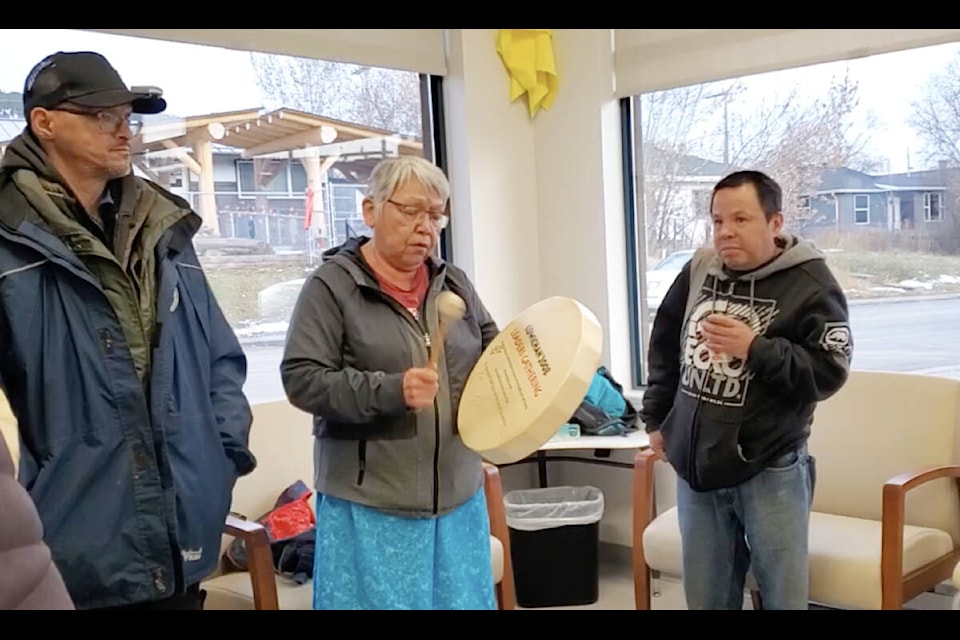Frontline workers came together as volunteers to provide a pop-up education overdose prevention site in Williams Lake Nov. 26.
“We have lost too many of our young people, our loved ones from every community,” said former Esk’etemc Chief Charlene Belleau during a blessing ceremony at the First Nations Wellness Centre where the pop-up site was located. “It’s hard to watch.”
Belleau invited David Gibbons and Dean Hare to stand beside her as she said a prayer and sang the Peace Song by the late Arthur Dick from her community.
Gibbons said he struggles with alcohol addiction and Hare said he is a recovered addict who dedicates his time helping people on the streets.
“The government talks about the United Nations Declaration of the Rights of Indigenous People. A big word that just means you deserve just as much as anybody else. Not anymore, not any less,” Belleau told them. “You are just as good and we need to hold governments accountable to that.”
Yunesit’in Chief Lennie Solomon thanked everyone for the work they were doing at the site.
“Like Charlene said, there is not one person here who has not been affected by the toxic drug crisis. It’s good to see you putting the tent up outside,” he said. “I’m here to show my support.”
Belleau said it was good the site was happening at the First Nations Wellness Centre, which celebrated its grand opening last month.
“At the opening we talked about wellness and how we want it our way and will do it our way. This is exactly what should be happening. We have a problem among our own people. Yes, we are concerned about everyone else, but we need a safe place for our people.”
Belleau noted she could have attended funerals that day, but chose to come to the ceremony at the site.
“To me there’s a point in my life where I decide either I am at a funeral or I go the other way and try and help people live.”
She said she looks forward to getting the site set up permanently.
In just three days, Renee McKeown, a nurse who works at Esk’etemc, organized the site and volunteers.
“We call them e-OPS or a mobile overdose prevention site,” she said. “We don’t have a space or any agency that is stepping up yet to be able to do that.”
By doing it outside in a tent, there can be inhalation use and injection use, she added. An e-OPS does not provide drugs, but will provide education, access and training on naloxone, harm reduction supplies and access to drug checking.
The hope is to have something permanent in the future.
Hare said an overdose prevention site is needed in Williams Lake.
“We have all been affected by this,” he said.
He told the Tribune his own 26-year-old son died from an overdose last summer.
Hare said people have nowhere to go to be “clean and safe,” adding the stigma often keeps users away from accessing available services.
In the evenings, Hare often goes to areas in the city where he knows drug users are. He brings a stroller, packed with Naloxone kits and safe supplies for distribution.
On Sunday morning he told the Tribune, he gave Naloxone to two different people who had overdosed on Saturday night.
Paramedics have responded to 40 overdose patients between Sept. 1 and Nov. 17, 2022 in Williams Lake according to numbers provided by BC Emergency Health Services.
